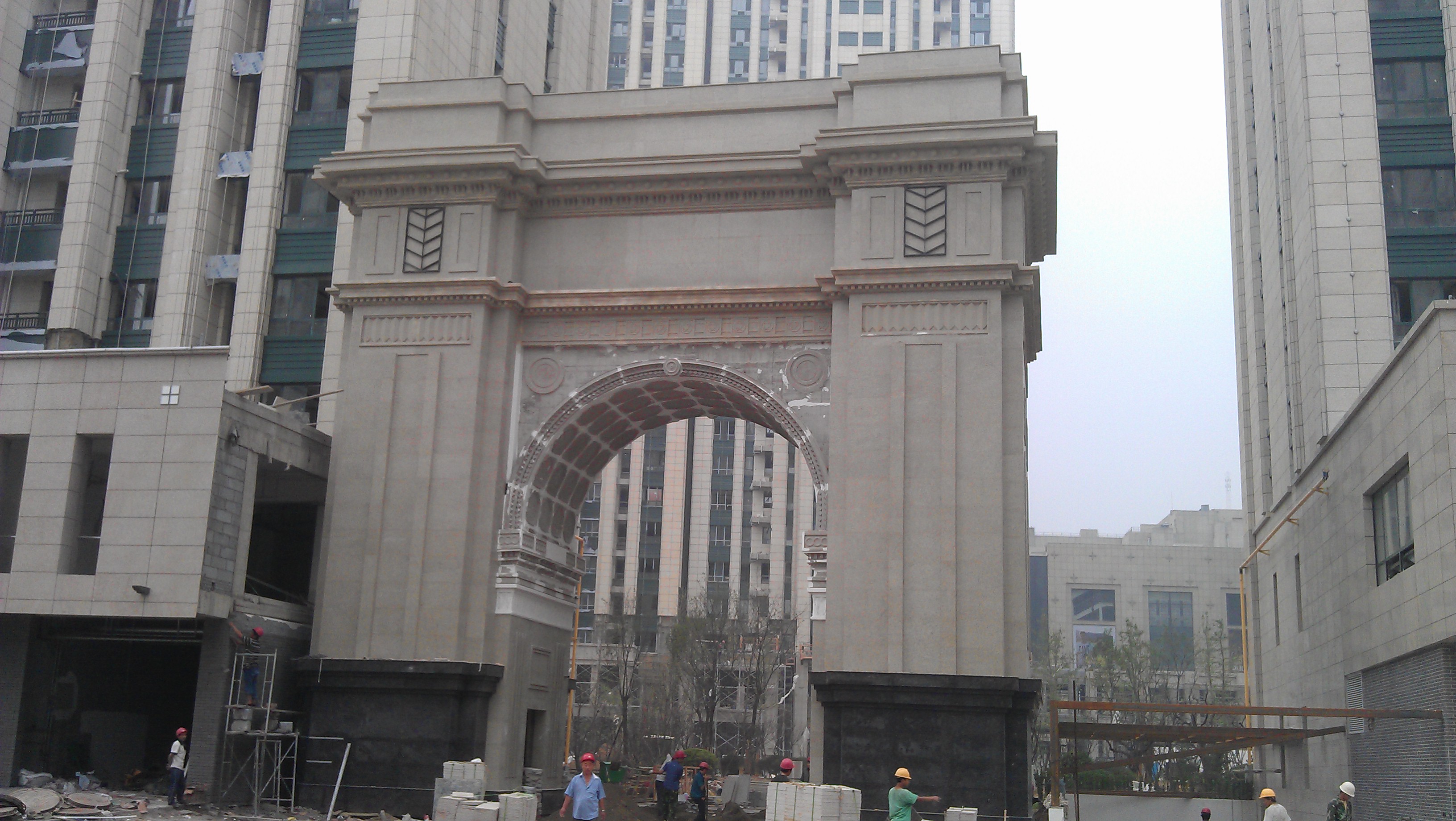引起GRC轻质构件开裂的因素较多,但主要原因是构件的收缩变形引起。构件在收缩过程中会产生收缩应力,使构件和接缝材料产生拉伸变形,当拉伸变形不足以抵消收缩变形时,裂缝就会产生。
There are many factors causing the cracking of GRC lightweight members, but the main reason is the shrinkage deformation of members. In the process of shrinkage, the component will produce shrinkage stress, resulting in tensile deformation of the component and joint material. When the tensile deformation is not enough to offset the shrinkage deformation, cracks will occur.
开裂的程度随地区不同有很大差异。南方尤其是沿海地区气候潮湿,全年绝大多数时间空气相对湿度在90%左右,在这潮湿的气候环境下,GRC轻质构件的含水率始终不下,如果不采取特别的烘干措施,构件在自然状态下的含水率无法小于《标准》规定的10%。因此,南方尤其是沿海地区更容易开裂。开裂通常发生在构件与构件以及构件与梁的接缝处。开裂的宽度与构件的干缩值、冷缩值以及构件的横向长度等有关,绝大多数裂缝宽度在0.5mm以内。
The degree of cracking varies greatly with different regions. The climate in the south, especially in coastal areas, is humid, and the air relative humidity is about 90% most of the year. In this humid climate environment, the moisture content of GRC lightweight components is always not lower. If special drying measures are not taken, the moisture content of components in natural state cannot be less than 10% specified in the standard. Therefore, the south, especially the coastal areas, are more prone to cracking. Cracking usually occurs at the joints between members and between members and beams. The crack width is related to the dry shrinkage value, cold shrinkage value and transverse length of the member. Most crack widths are within 0.5mm.

目前开裂问题的途径主要是:从改善构件的材性和在安装、构造。
At present, the main way to solve the cracking problem is to improve the material properties of components and in installation and structure.
改善构件的材性主要应达到两个目标:一是降低构件的收缩值,其中包含干缩值和冷缩值,以减少构件的收缩变形;二是提构件和接缝材料的弹性,增加拉伸变形值。通过这“一增一减”来尽量达到构件的收缩变形与拉伸变形的平衡。但目前GRC轻质构件的特性使拉伸值与收缩值平衡比较有困难。
To improve the material properties of components, two objectives should be achieved: one is to reduce the shrinkage value of components, including dry shrinkage value and cold shrinkage value, so as to reduce the shrinkage deformation of components; The second is to improve the elasticity of components and joint materials and increase the tensile deformation value. Through this "one increase and one decrease" to try to achieve the balance between shrinkage deformation and tensile deformation. However, the characteristics of GRC lightweight components make it difficult to balance the tensile value and shrinkage value.
在构件的安装构造上:目前的主攻方向普遍是放在构件接缝处理和按缝材料上。在构件本身的质量合格的前提下,构件的接缝处始终是薄弱环节,裂缝容易在这里产生。单纯用“粘牢”的办法来防止裂缝产生较困难,即使在构件的接缝处贴上玻纤布增强也很难。构件一定会收缩,靠硬拉难以拉住,结果往往构件开裂或是构件缝开裂,因为并没有收缩变形与拉伸变形的平衡问题。更何况构件安装时需上下、前后反复错动才能对齐,难以做到砂浆饱满,多数是安装后再补塞砂浆,故不容易保证粘牢。
On the installation structure of components: at present, the main attack direction is generally on the component joint treatment and joint materials. On the premise that the quality of the component itself is qualified, the joint of the component is always a weak link, and cracks are most likely to occur here. It is difficult to prevent cracks simply by "sticking", and it is difficult to solve even if glass fiber cloth is pasted at the joints of components. The component will shrink, and it is difficult to pull it by hard pulling. As a result, the component often cracks or component joints crack, because the balance between shrinkage deformation and tensile deformation is not solved. Moreover, the components need to be staggered up and down, back and forth repeatedly during installation, so it is difficult to make the mortar full. Most of them are filled with mortar after installation, so it is not easy to ensure the adhesion.
采用弹性砂浆增加拉伸变形值的方法,单就防止构件缝开裂而言,思路和方法都是正确的。但实践起来却有一个矛盾难以,即弹性砂浆的弹性与构件饰面材料的低弹性之间的矛盾。构件饰面材料(如腻子)的拉伸率却远没有弹性砂浆这么大,构件表面仍然会开裂。若为此而要求饰面材料也达到同样的拉促率,成本上不现实
The method of increasing tensile deformation value with elastic mortar is correct only in terms of preventing member joint cracking. But in practice, there is a contradiction that is difficult to solve, that is, the contradiction between the elasticity of elastic mortar and the low elasticity of component facing materials. The tensile rate of component facing materials (such as putty) is far less than that of elastic mortar, and the component surface will still crack. If the finishing materials are required to reach the same pulling rate for this purpose, the cost is unrealistic








